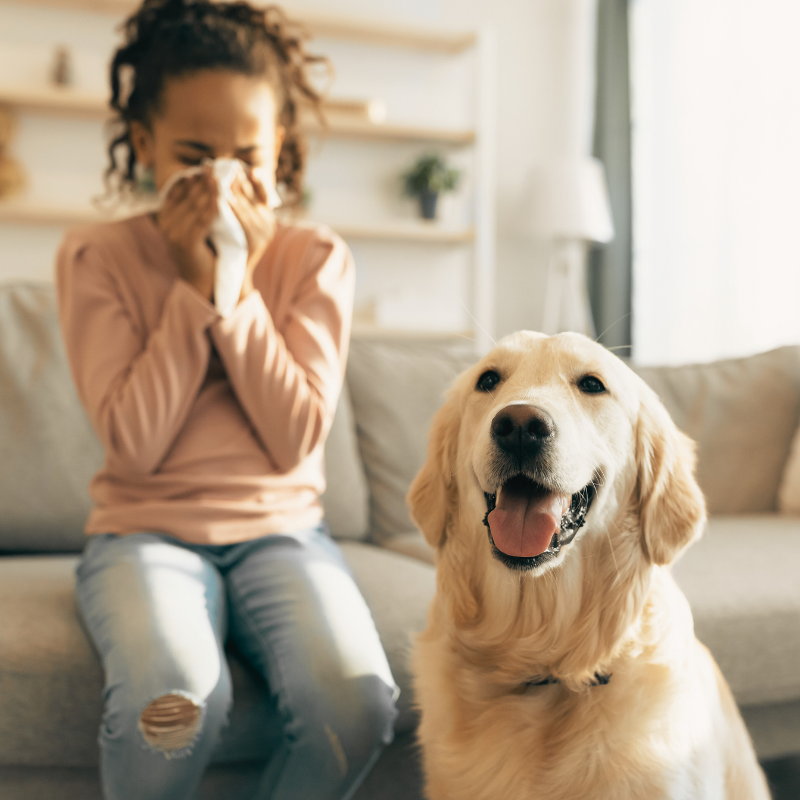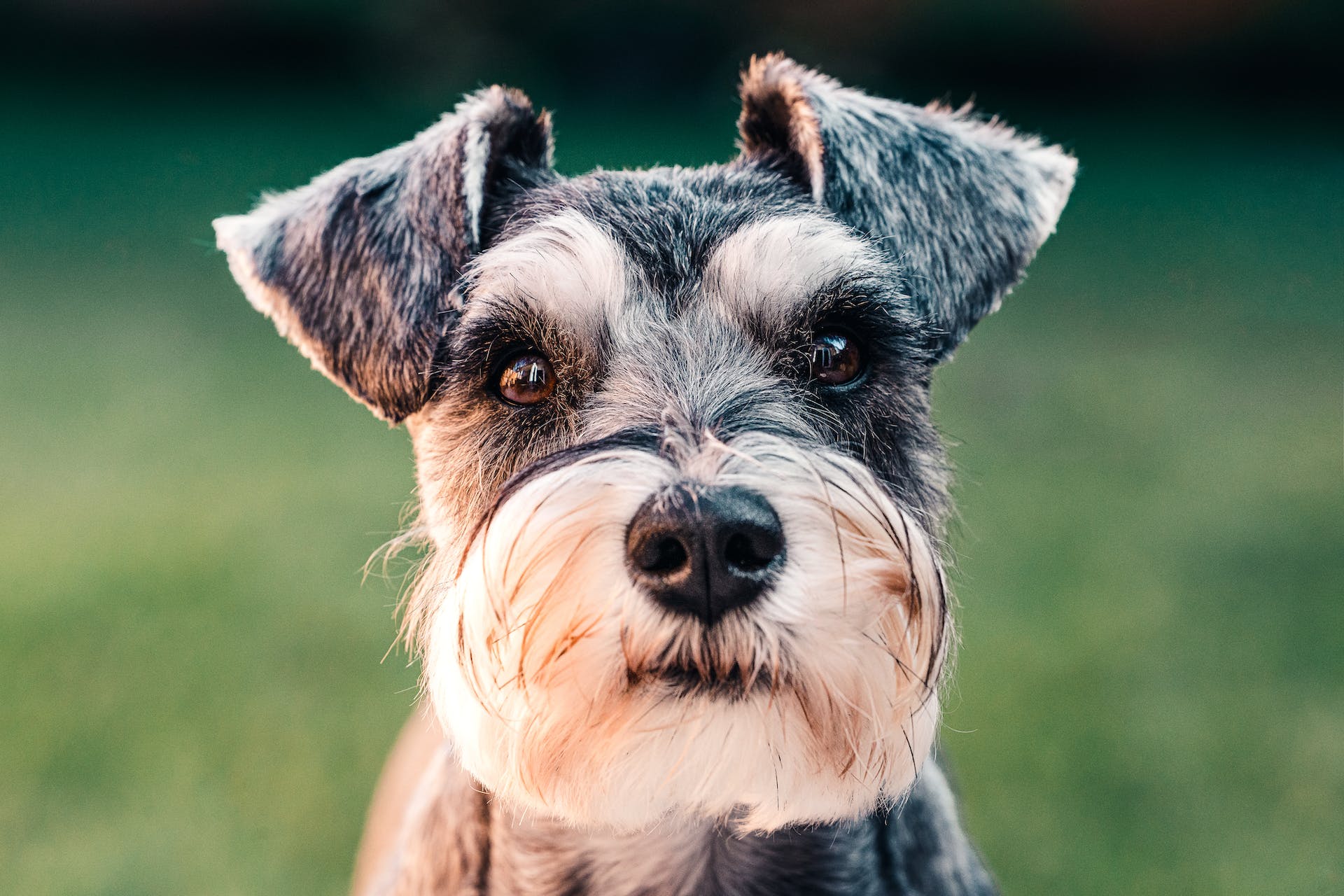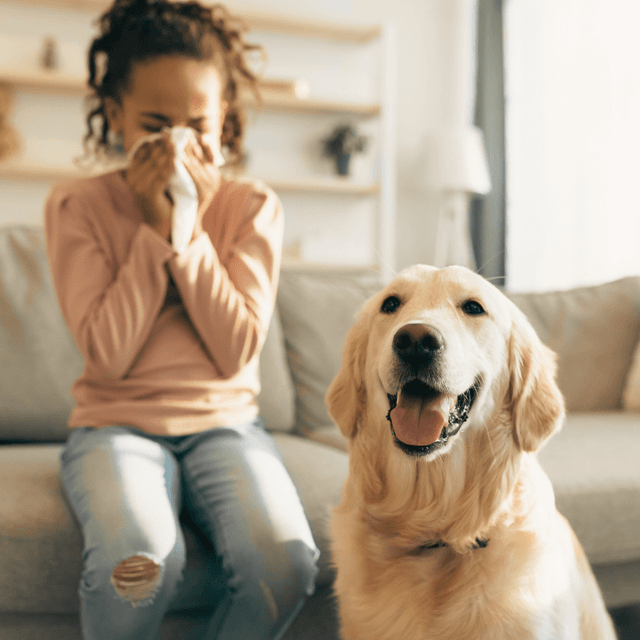
If you love dogs but suffer from allergies, finding the right breed can feel like an impossible task. The good news is that there are several dog breeds that are considered more hypoallergenic than others, making it possible for many allergy sufferers to enjoy the companionship of a furry friend.
In this comprehensive guide, we'll explore what makes a dog hypoallergenic, discuss the best hypoallergenic dog breeds, and provide practical tips for managing dog allergies in your home.
What Makes a Dog Hypoallergenic?
First, it's important to understand that no dog is 100% hypoallergenic. The term "hypoallergenic" means that these breeds are less likely to cause allergic reactions, but they can still trigger symptoms in some sensitive individuals.
Dog allergies are primarily caused by proteins found in:
Saliva: Contains Can f 1 and other allergen proteins
Urine: Also contains allergenic proteins
Dander: Dead skin cells that dogs naturally shed
Hypoallergenic dogs typically have characteristics that reduce the amount of allergens they spread:
Low-shedding or non-shedding coats
Curly or wiry hair that traps dander
Less drooling
Smaller size (less surface area for allergen production)
Top Hypoallergenic Dog Breeds
1. Poodle (Standard, Miniature, and Toy)
Poodles are perhaps the most well-known hypoallergenic dogs. Their curly, dense coat traps dander and hair, preventing it from spreading throughout your home. Poodles require regular grooming but are excellent companions for allergy sufferers.
Size: Varies (toy: 4-6 lbs, miniature: 10-15 lbs, standard: 45-70 lbs)
Temperament: Intelligent, active, friendly
Grooming: High maintenance, requires regular professional grooming
2. Bichon Frise
These fluffy, cheerful dogs have a double coat that sheds minimally. Their hair grows continuously, requiring regular grooming, but this characteristic helps trap allergens.
Size: Small (12-18 lbs)
Temperament: Playful, gentle, good with children
Grooming: Requires regular brushing and professional grooming
3. Portuguese Water Dog
Made famous by the Obama family, Portuguese Water Dogs have a waterproof coat that sheds very little. They're medium-sized dogs with high energy levels.
Size: Medium (35-60 lbs)
Temperament: Energetic, loyal, intelligent
Exercise needs: High, requires daily exercise and mental stimulation
4. Schnauzer (Miniature, Standard, and Giant)

Schnauzers have a distinctive wiry coat that sheds minimally. They're known for their intelligence and make excellent watchdogs.
Size: Varies (miniature: 11-20 lbs, standard: 30-45 lbs, giant: 55-85 lbs)
Temperament: Alert, spirited, obedient
Grooming: Requires regular brushing and professional grooming
5. Yorkshire Terrier
These small dogs have hair rather than fur, which means they shed less dander. However, their long coat requires regular maintenance.
Size: Small (4-7 lbs)
Temperament: Bold, confident, courageous
Good for: Apartments, seniors, people who want a small companion
6. Maltese
Maltese dogs have silky, white hair that grows continuously but sheds very little. They're small, gentle dogs that make excellent lap companions.
Size: Small (4-7 lbs)
Temperament: Gentle, affectionate, responsive
Exercise needs: Low to moderate
7. Labradoodle and Goldendoodle
These poodle crossbreeds often inherit the hypoallergenic qualities of their poodle parent. However, there's no guarantee, as traits can vary significantly even within the same litter.
Size: Varies (30-80 lbs depending on poodle parent size)
Temperament: Friendly, intelligent, energetic
Note: Not guaranteed to be hypoallergenic; varies by individual dog
8. Chinese Crested
Available in both hairless and powderpuff varieties, Chinese Crested dogs can be good for allergies, particularly the hairless variety which has minimal hair.
Size: Small (5-12 lbs)
Temperament: Alert, playful, devoted to family
Special care: Hairless variety needs skin protection from sun and cold
Tips for Living with Dogs When You Have Allergies
Even with a hypoallergenic breed, there are additional steps you can take to minimize allergic reactions:
Regular Grooming
Brush your dog daily to remove loose hair and dander
Bathe your dog weekly with a gentle, hypoallergenic shampoo
Consider professional grooming every 6-8 weeks
Home Environment Management
Use HEPA air purifiers in your home
Vacuum frequently with a HEPA filter vacuum
Wash your dog's bedding weekly in hot water
Keep your bedroom dog-free to ensure allergen-free sleep
Consider hardwood or tile flooring instead of carpet
Personal Hygiene
Wash your hands after petting or handling your dog
Avoid touching your face after contact with your dog
Change clothes after extended play sessions
Important Considerations Before Getting a Hypoallergenic Dog
Test Your Allergies First
Before committing to a dog, spend time with the specific breed you're considering. Visit breeders, dog shows, or friends who own the breed to see how you react.
Grooming Costs
Many hypoallergenic breeds require regular professional grooming, which can be expensive. Factor this ongoing cost into your budget.
Individual Variation
Remember that individual dogs within a breed can vary significantly in their allergen production. Even within hypoallergenic breeds, some dogs may trigger more reactions than others.
Conclusion
While no dog is completely hypoallergenic, the breeds listed above are excellent choices for people with dog allergies. The key to success is choosing the right breed for your lifestyle, maintaining proper grooming and home hygiene, and working with your healthcare provider to manage your allergies effectively.
Remember that bringing a dog into your home is a long-term commitment. Take the time to research breeds thoroughly, meet individual dogs, and prepare your home environment before making your decision. With the right approach, many people with allergies can successfully enjoy the companionship of a beloved canine friend.
